The Osaka Expo 2025 kicked off on April 13 under the theme 'Designing Future Society for Our Lives,' featuring Myaku-Myaku, a multi-eyed, red-and-blue blob as its official mascot along with other global partners’ mascots reflecting their home countries’ culture, highlighting Japan's renowned and thriving ACG (anime, comics, and games) industry.
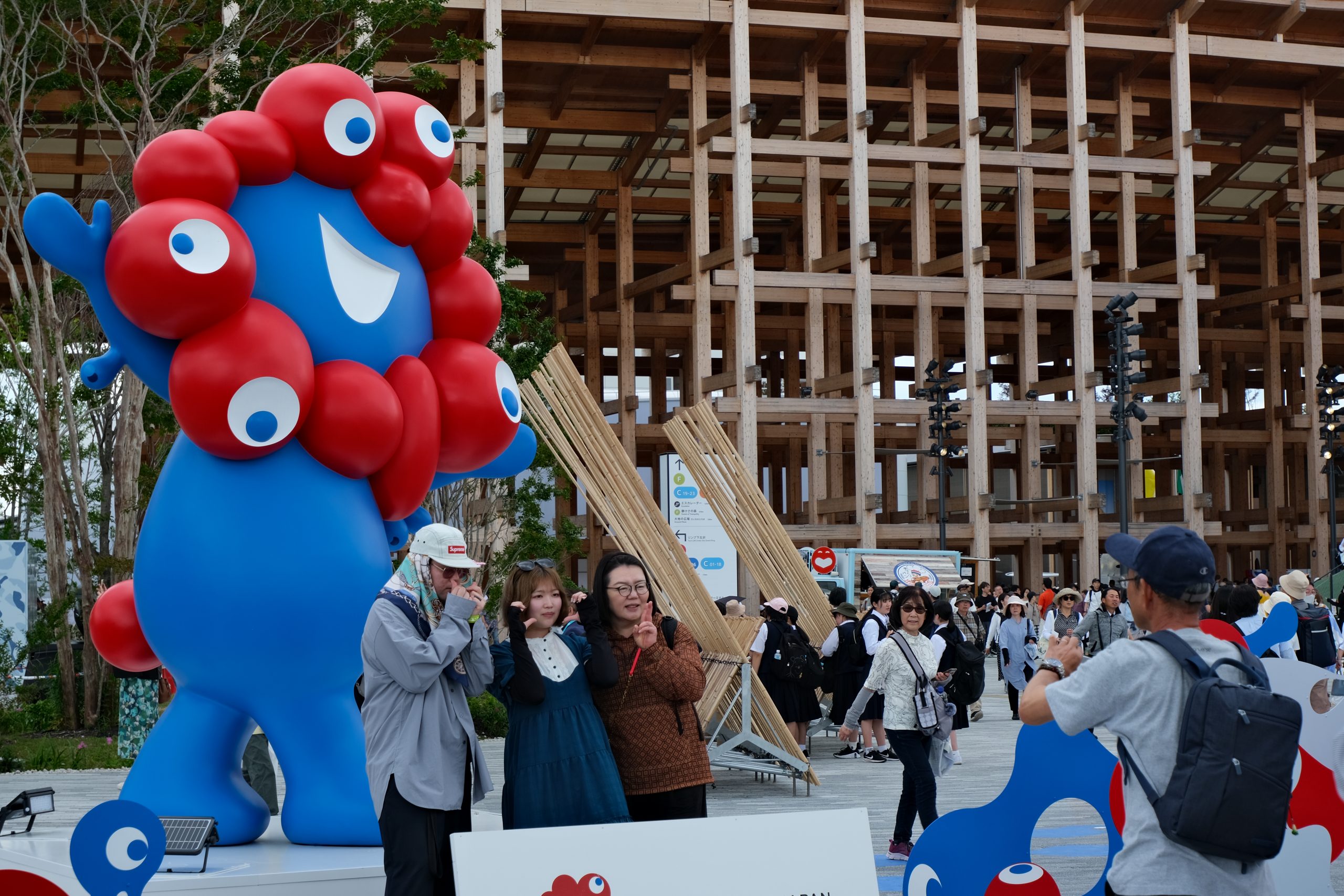
Japan’s unique animation-producing environment catalyses “Kawaii Culture” (かわいい文化), which emphasizes appealing characters. The "performativity of cute," as anthropologist Christine Yano describes it, is deeply embedded in contemporary Japanese culture. In her book Pink Globalization: Hello Kitty’s Trek Across the Pacific, Yano explains that kawaii culture serves multiple roles: it’s a playful, personal mode of self-expression and identity, while also functioning as a potent tool for branding and cultural diplomacy.
While Japan has this unique cultural phenomenon, many countries around the globe also have thier own mascot traditions, leading them to bring their own mascots to the party. Outstanding examples ranged from host country, Japan, to European countries such as Italy, German, and Asia like China.
Designed by children’s book author Kohei Yamashita through the government’s open call to the Japanese public, Japan’s mascot’s name—an onomatopoeia evoking a pulse -- was also chosen from public submissions. Described as "creepy but cute", MYAKU-MYAKU has already sparked significant economic activity through popular merchandise and has greatly enhanced the exhibition's global visibility..
At the spot, people lined up for hours to get official plush toys or related items. Visitors poured in to take group photos with the mascot. Elements of Myaku-Myaku can be seen around the exhibition being part of the whole event.
Sato Ryoko rushed to the satellite store of MARUZEN JUNKUDO right after her visit to the Japan Pavilion, spent over one hour waiting in the line to get in, and won the first prize of a giant MYAKU-MYAKU plush toy with her friends after their shopping spree.

According to Resona Research Institute data cited by Nikkei and JPX, visitor spending during the Expo could reach 1 trillion yen (HK$54.95 billion). The Japan Association for the 2025 World Exposition estimates that 90% of visitors will be domestic, with nearly 40% coming from outside western Japan's Kinki region, where Osaka is located.
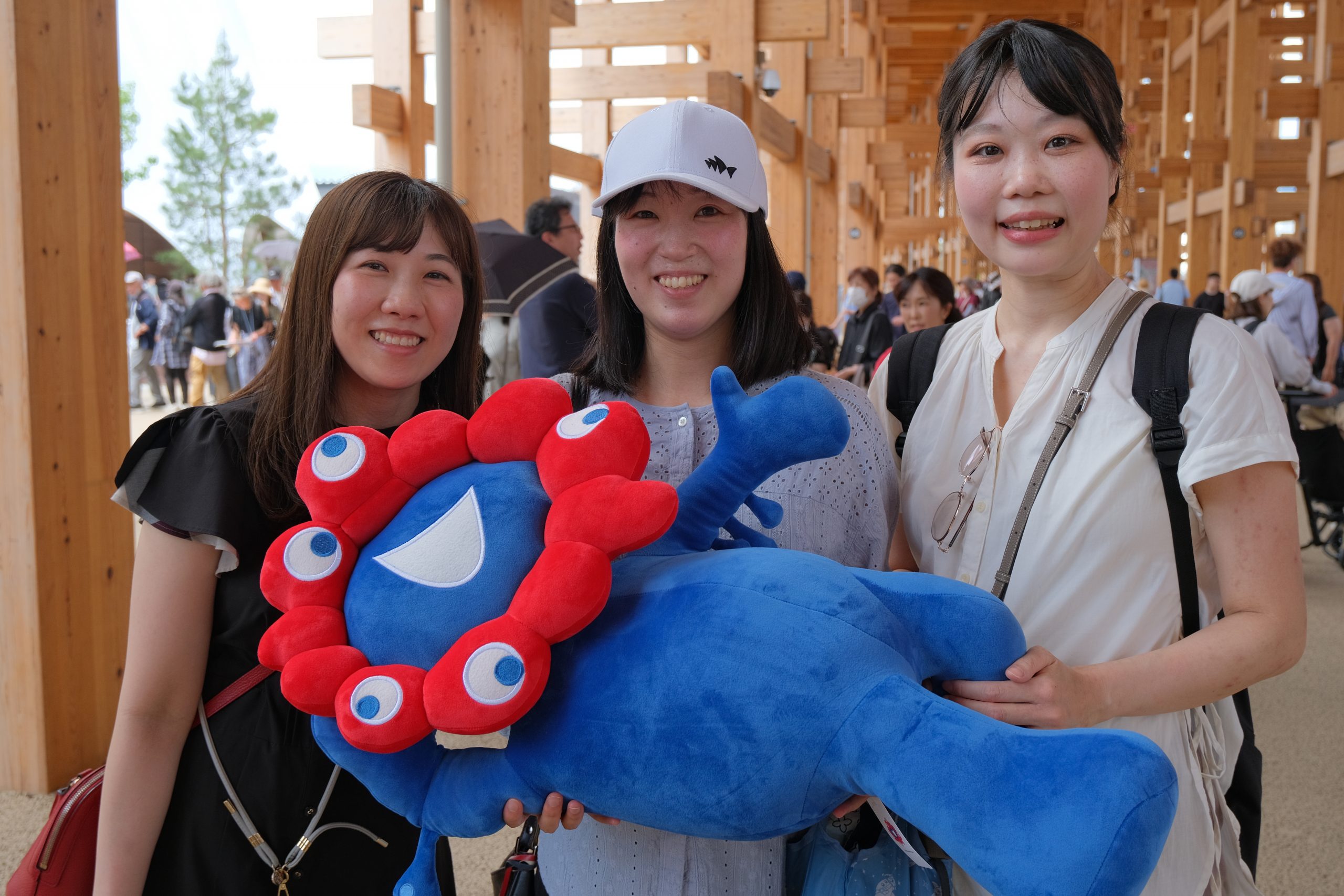
The Asia Pacific Institute of Research (APIR), an independent think tank, estimates the economic impact at approximately 2.75 trillion yen (about $18.21 billion) across Japan, with the analysed figure based on the premise that the Expo will receive 28.2 million visitors during the 6-month exhibition period.
At the Japan Pavilion, Hello Kitty serves as the special supporter for the algae-themed exhibit — presented by the Ministry of Economy, Trade and Industry to highlight the potential of this natural resource.
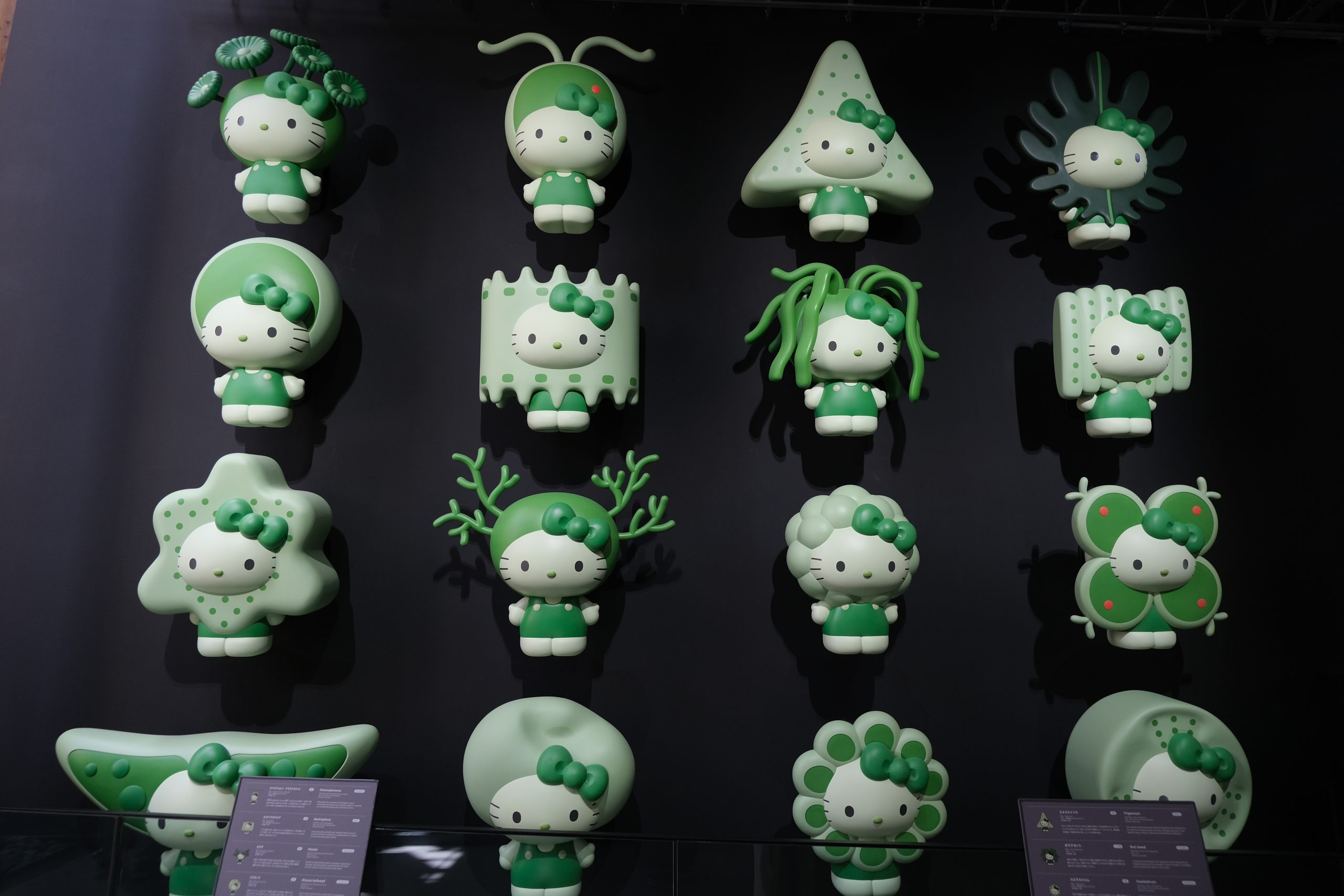
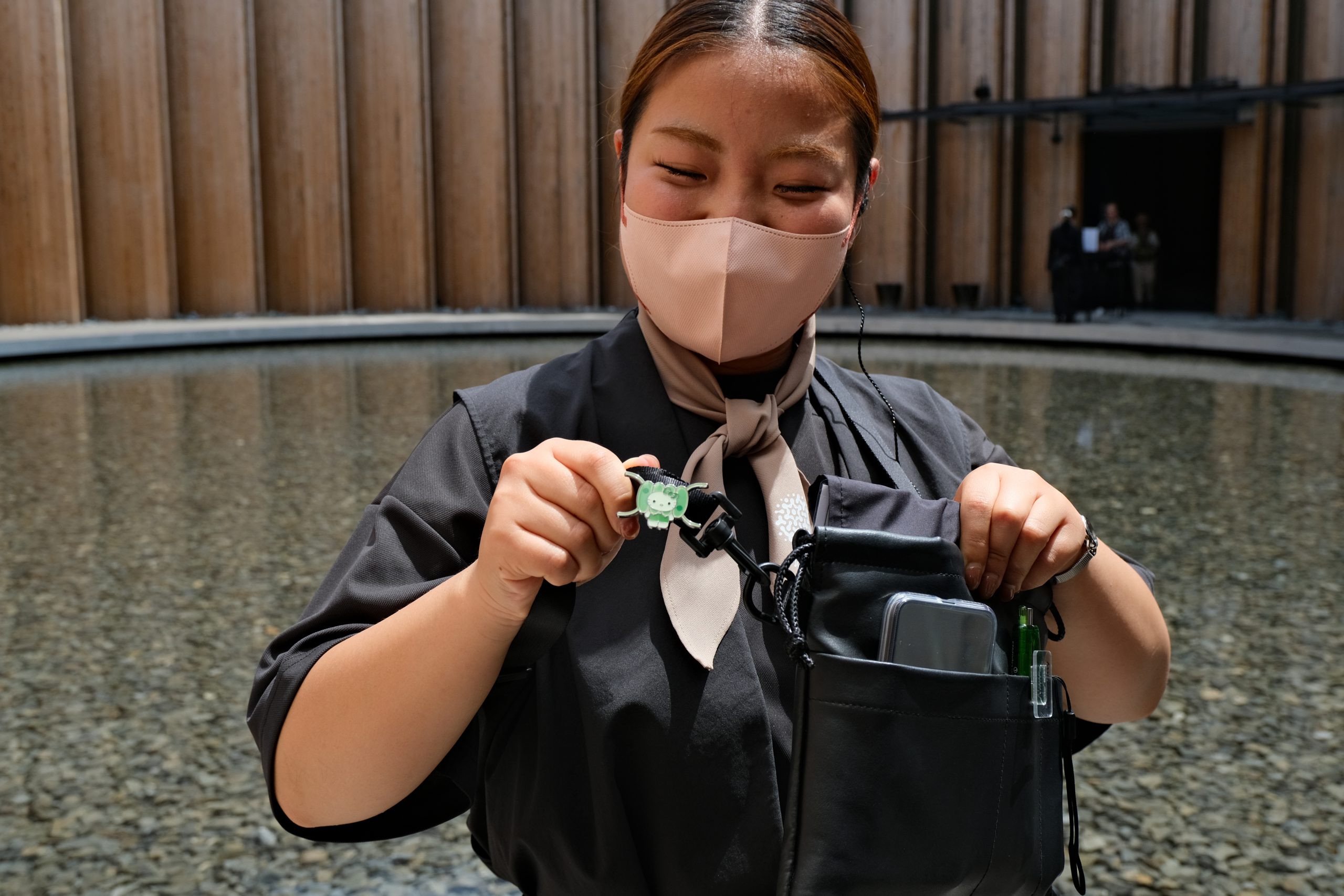
Doraemon is appointed as the guide for the Factory Area, where he explains exhibits on "circular monozukuri" (recycling-oriented manufacturing), showcasing Japan’s integration of traditional craftsmanship with cutting-edge technology.
Similarly, BE@RBRICK figures, also known as “BearBrick,” are featured as moving elements flowing around the exhibition area that guide guests through the JUNKAN cycle, showing how garbage is transformed into useful resources.
At the souvenir store next to the Japan Pavilion, the clerk explained that HelloKitty-related items remain the most popular products among visitors. The Hello Kitty plush toys were sold out when the reporter visited, despite a recent restock a few days ago.


Carol Yu, a Taiwan tourist visiting the Osaka Expo, spent 9,000 New Taiwan dollars (HK$ 2354) on souvenirs, which equals her entire living expenses for two days in Osaka.
Yu said that the price for each souvenir was in fact very expensive for her, but she couldn’t help buying because of their cuteness.

“I spent so much on Myaku-Myaku related Sanrio products because I used to collect cute plush toys as a habit. Meanwhile, the enthusiasm of tourists at the spot pushed me to buy more.”

The strong fan base of Sanrio characters brings high profits to the company that creates them. Last year, Hello Kitty celebrated her 50th year anniversary by collaborating with famous American pop singer Bruno Mars. Meanwhile, the parent company Sanrio’s North America sales jumped 121% and operating profit reached a record high in fiscal year 2024.

Source: https://www.tokaitokyo.co.jp/japan-gateway/irshowbox/sanrio-company/)
As of May 2025, there have been 563 million posts with the hashtag #cute on Instagram. On TikTok, approximately 69.7 million videos used the same hashtag in 2024, accumulating more than 716.3 billion views.
Kawaii character designs, particularly those with anthropomorphic features, can be incorporated into various products like toys, clothing, and everyday items, driving increased sales and brand recognition.
The Master Licensing Office of Japan World Expo is set to conduct licensing business utilizing the Association’s intellectual property for the planning, production, and sales of various products using the image of MYAKU-MYAKU.
Over 107 companies have entered into official licensing agreements as of April 2, 2024. Around 2,000 products are available for sale in both online and offline shops, with 11 permanent stores located in Tokyo, Osaka, and Kyoto.
The power of kawaii culture can be seen not only in its integration into souvenirs, but also in how corporations use it to build their brand image, and explain “complex concepts” through something “adorable” and “concrete.”
“Kawaii culture have become major pillars of the national ‘Cool Japan Strategy’ to attract visitors from around the world who love Japan,” said Byron Russel, Kansai & Awaji division manager of Pasona Group, the second largest human resources company in Japan that provides life solutions.
Pasona Group chose Astro Boy as their pavilion guide, a young android with human emotions in the comic Tetsuwan Atomu, where Astro Boy fought for the benefit of mankind. The company had a previous relationship with Tezuka Productions, the licensor of Astro Boy, when they created a temporary attraction for the anime theme park operated by Pasona.
“As our pavilion navigator, Astro Boy will show visitors around our various counters,” said Russel, “the robot boy with a human spirit represents harmony between humanity and technology.”
An important exhibit in the pavilion features the “iPS heart”- a term used in its narrative to represent the potential of cardiac regeneration through induced pluripotent stem cells (iPS cells)-with the core technology in this field being advanced by Cuorips Inc, led by University of Osaka cardiovascular surgery professor Yoshiki Sawa. According to Pasona’s introduction video, Astro Boy was seriously damaged in a fight but was reborn as "Neo Astro Boy" equipped with the “iPS heart”.

“‘Neo Astro Boy’ attracts around 10,000 visitors who pass our pavilion per day,” said Russel, “we are looking forward to collaborating with more beloved Japanese characters in the future.”
At the Osaka Expo 2025, international pavilions have embraced character-based design, with some explicitly incorporating kawaii aesthetics to connect with Japanese audiences.
For example, "WA! Germany," the German Pavilion, focuses on the circular economy, emphasizing harmony and sustainability. Given that about 90% of expected visitors are from Japan, the pavilion features a round-shaped and colorful mascot called "Circular" designed to resonate with local preferences and improve visitor interaction.
"Circular" serves as a trilingual guide (German, Japanese, English) to navigate the pavilion. Visitors receive a palm-sized version as an audio guide throughout their visit to the pavilion. Described as a "cute, little speaking guide," Circulars can talk to each other if two holders are standing nearby, or mimic chewing sustainable food when placed near a hidden touchpoint, introduced by the staff as an “Easter-egg gift” of the visit in addition to normal sound guidance and detailed explanations of different exhibition areas.


Meanwhile, the China Pavilion chose the panda, the classic Chinese animal character, as its mascot which greets each visitor the moment they start to immerse themselves at the spot. The “Hello-Panda” can also be brought back home– it is available at the China Pavilion souvenir shop.
Prices of the panda doll range from 49,800 yen (HK$2,736) to 76,800 yen (HK$4,220). According to the shop's staff, each panda doll’s hair is made of wool, with the interior filled with silicone to simulate the weight of an actual panda. Despite prices exceeding a thousand Hong Kong dollars, visitors-including Japanese, Chinese and Western foreigners- kept buying the panda doll, which made them go out of stock several times since the Osaka Expo 2025 opened.
As the anime market size was estimated at USD 34,256.2 million in 2024 and is projected to grow at a CAGR of 9.8% from 2025 to 2030 with Japan as a key player, the country’s favour for kawaii culture not only enhances Japan’s soft power, attracting international tourists to character-themed spots but also boosting merchandise sales, with kawaii aesthetics penetrating consumer goods.
《The Young Reporter》
The Young Reporter (TYR) started as a newspaper in 1969. Today, it is published across multiple media platforms and updated constantly to bring the latest news and analyses to its readers.

Photo Gallery: South Koreans choose their new president after six months of political chaos
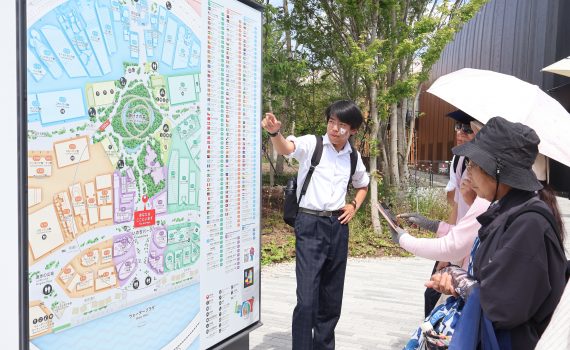
Confusion over navigation app at Osaka Expo 2025


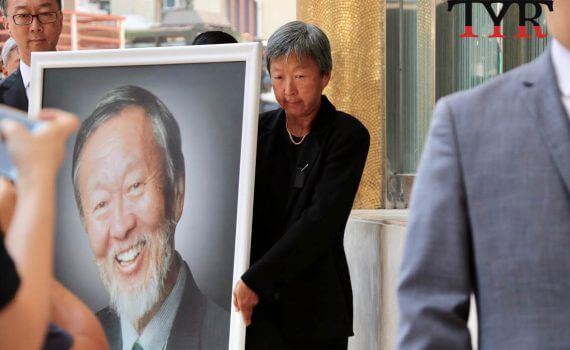

Comments